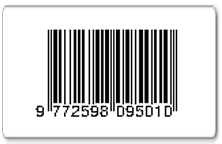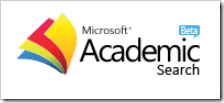Pengaruh Pemberdayaan Wanita Terhadap Pertumbuhan Ekonomi Melalui Usaha Makanan Halal (UMKM)
Abstract
Keywords
Full Text:
PDF (Indonesian)References
Abdullah, S. A., & Sulaiman, M. (2019). Global halal food market development: A review. Trends in Food Science & Technology, 86, 38-47.
Acemoglu, D., & Robinson, J. A. (2012). Why nations fail: The origins of power, prosperity, and poverty. Crown Business.
Amin, H., & Isa, Z. M. (2018). The role of halal food ecosystem on halal food supply chain: A review. Journal of Islamic Marketing, 9(3), 684-705.
Ayyagari, M., Beck, T., & Demirgüç-Kunt, A. (2007). Small and medium enterprises across the globe. Small Business Economics, 29(4), 415-434.
Babbie, E. R. (2016). The practice of social research. Cengage Learning.
Byrne, B. M. (2016). Structural equation modeling with AMOS: Basic concepts, applications, and programming (3rd ed.). Routledge.
Creswell, J. W., & Creswell, J. D. (2017). Research design: Qualitative, quantitative, and mixed methods approaches. Sage publications.
DeVellis, R. F. (2016). Scale development: Theory and applications. Sage publications.
Diamantopoulos, A., & Siguaw, J. A. (2018). Introducing LISREL: A guide for the uninitiated. Sage.
Duflo, E. (2012). Women's empowerment and economic development. Journal of Economic Literature, 50(4), 1051-1079.
Fatoki, O. O., & Smit, A. (2011). Constraints to credit access by new SMEs in South Africa: A supply side analysis. African Journal of Business Management, 5(8), 3067-3079.
Fatoki, O. O., & Smit, A. (2011). Constraints to credit access by new SMEs in South Africa: A supply side analysis. African Journal of Business Management, 5(8), 3067-3079.
Field, A. (2013). Discovering statistics using IBM SPSS statistics. Sage.
Gefen, D., Straub, D., & Boudreau, M. C. (2000). Structural equation modeling and regression: Guidelines for research practice. Communications of the Association for Information Systems, 4(7), 1-77.
Hair Jr, J. F., Hult, G. T. M., Ringle, C., & Sarstedt, M. (2016). A primer on partial least squares structural equation modeling (PLS-SEM). Sage Publications.
Kabeer, N. (1999). Resources, agency, achievements: Reflections on the measurement of women's empowerment. Development and change, 30(3), 435-464.
Kabeer, N. (2005). Gender equality and women's empowerment: A critical analysis of the third Millennium Development Goal. Gender & Development, 13(1), 13-24.
Kantis, H., Ishida, M., & Komori, N. (2002). Small firms in Latin America: A key to growth and poverty alleviation. IDB.
Kementerian Koperasi dan UKM Republik Indonesia. (2008). Undang-Undang Republik Indonesia Nomor 20 Tahun 2008 tentang Usaha Mikro, Kecil, dan Menengah.
Kline, R. B. (2015). Principles and practice of structural equation modeling. Guilford Publications.
M. Ismail, A. Khalid, N. Yusof, and A. Mohamad, "The Effects of Halal Certification towards the Performance of Small and Medium Enterprises (SMEs) in Malaysia," Procedia - Social and Behavioral Sciences, vol. 219, pp. 592-598, 2016.
Malhotra, A., Schuler, S. R., & Boender, C. (2002). Measuring women's empowerment as a variable in international development. World Bank.
Mankiw, N. G., & Taylor, M. P. (2014). Macroeconomics (3rd ed.). Worth Publishers.
Ministry of Micro, Small & Medium Enterprises. (n.d.). Definition of MSME. Diakses dari: https://msme.gov.in/defination-of-msme
Neneh, B. N., & Van Niekerk, J. A. (2018). Assessing women empowerment and SMEs growth in South Africa: A SEM approach. Journal of Economics and Behavioral Studies, 10(1), 40-56.
Nussbaum, M. C. (2000). Women and human development: The capabilities approach. Cambridge University Press.
OECD. (2019). Boosting the digital transformation of small and medium-sized enterprises. OECD Publishing.
Podsakoff, P. M., MacKenzie, S. B., & Podsakoff, N. P. (2012). Sources of method bias in social science research and recommendations on how to control it. Annual Review of Psychology, 63, 539-569.
Rasheed, M. I., Kousar, S., & Zubair, S. (2019). Empowering women through entrepreneurship development in Pakistan: A structural equation modelling approach. Journal of Innovation & Knowledge, 4(2), 113-121.
Sarwar, A., & Awan, U. (2020). The role of women in economic growth: A comparative study of Pakistan and India. Journal of International Women's Studies, 21(4), 306-322.
Sekaran, U., & Bougie, R. (2016). Research methods for business: A skill-building approach. John Wiley & Sons.
Sen, A. (1999). Development as freedom. Oxford University Press.
Tabachnick, B. G., & Fidell, L. S. (2019). Using multivariate statistics (7th ed.). Pearson.
Todaro, M. P., & Smith, S. C. (2014). Economic Development (12th ed.). Pearson.
Zulfqar, S., & Zulfqar, S. (2015). The role of women entrepreneurship in economic development of Pakistan: A SEM approach. International Journal of Economics, Commerce and Management, 3(2), 1-13.
Zulkifli, N. A., & Al-Obaidi, J. R. (2020). Understanding the halal food market: The opportunities and challenges in the global market. International Journal of Business and Society, 21(S1), 78-95.
DOI: http://dx.doi.org/10.35448/jiec.v8i1.25807
Refbacks
- There are currently no refbacks.

This work is licensed under a Creative Commons Attribution-ShareAlike 4.0 International License.
Copyright © Syi’ar Iqtishadi: Journal of Islamic Economics, Finance and Banking.


















